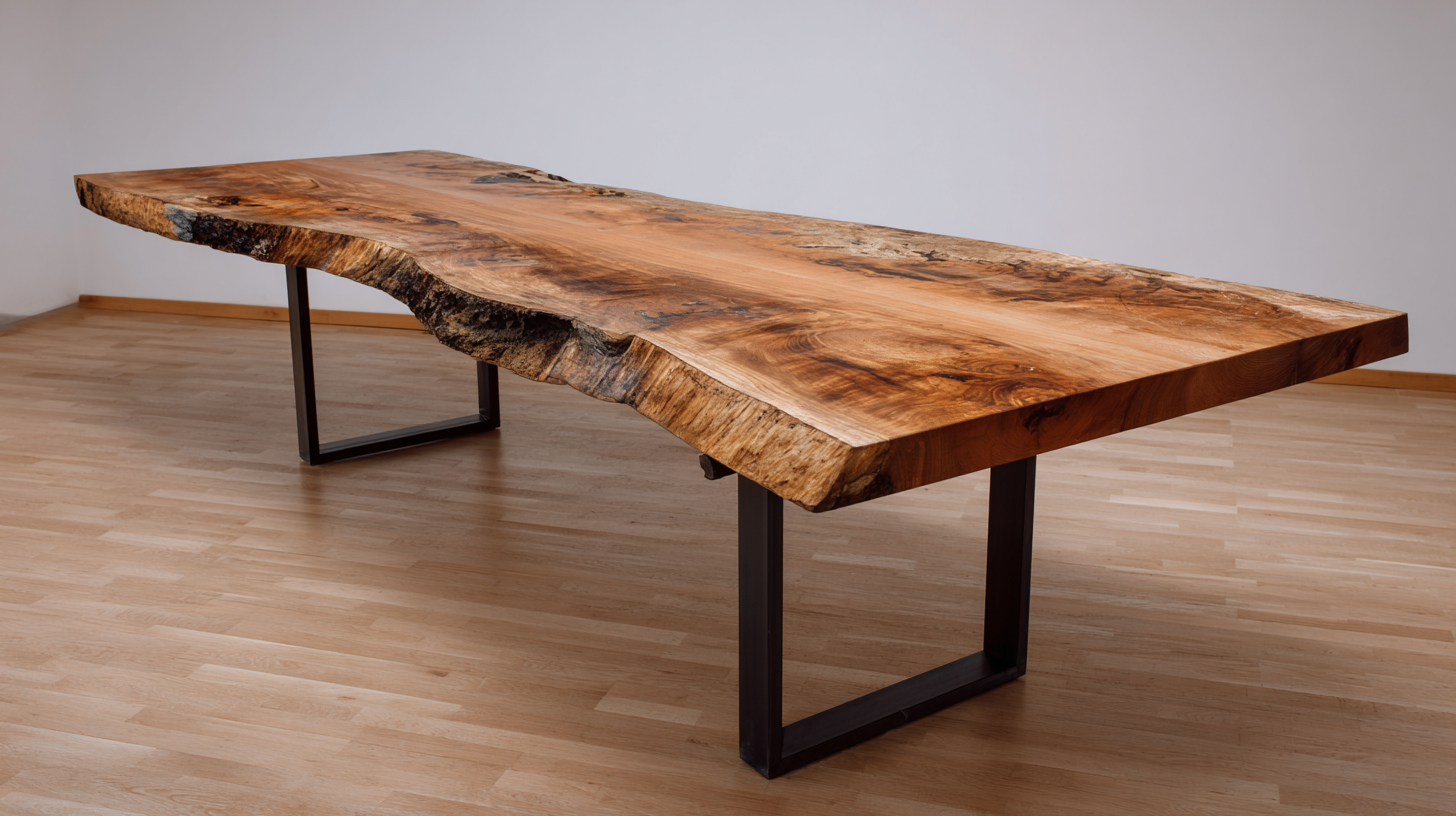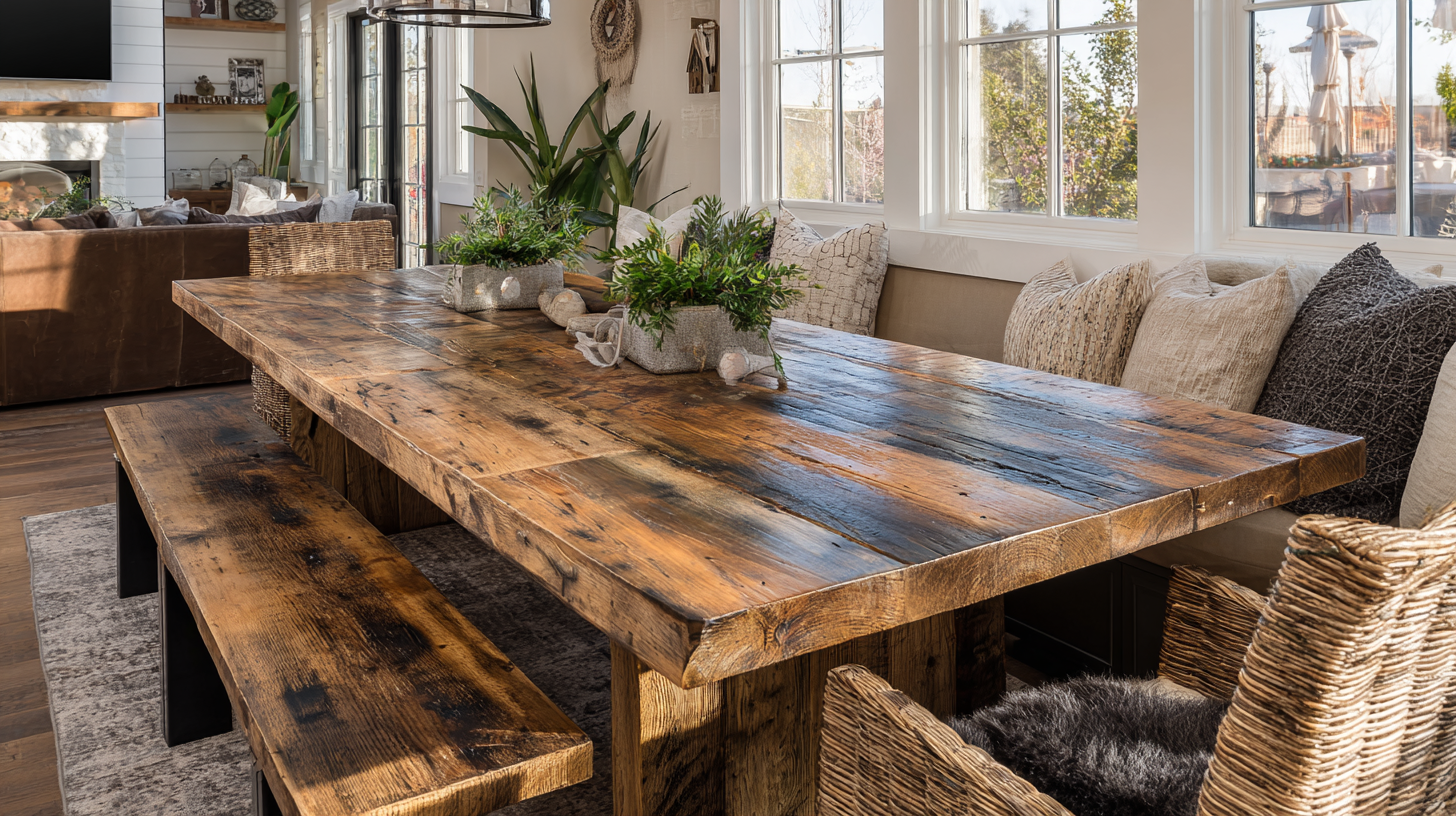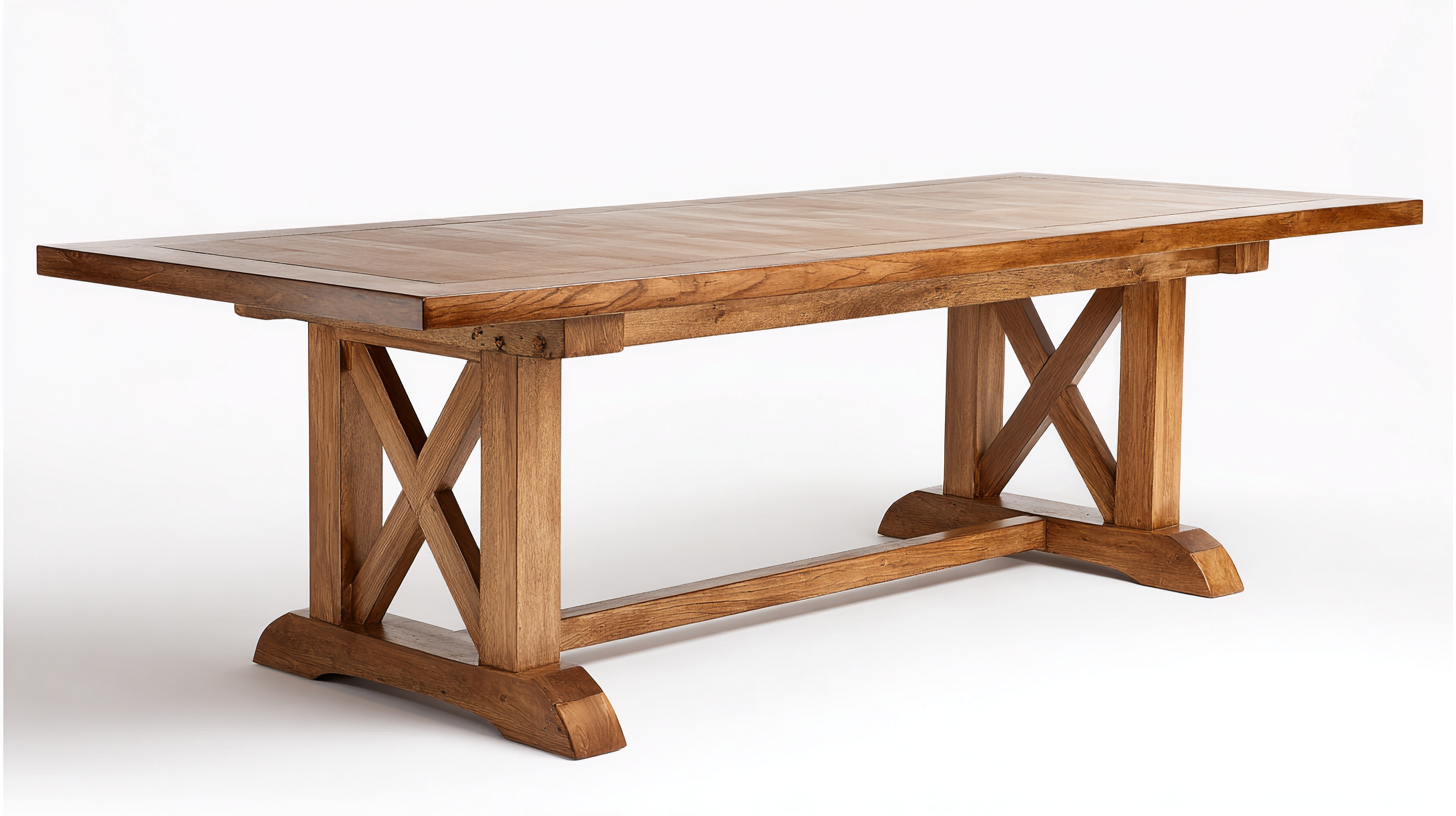
How to Choose the Best Wood Dining Room Tables for Your Space: A Comprehensive Guide
When it comes to furnishing your dining space, choosing the right wood dining room tables can make all the difference in both functionality and aesthetics. With a plethora of options available, from rustic farmhouse styles to sleek modern designs, understanding the unique characteristics and suitability of different types of wood tables is essential for making an informed decision. In this comprehensive guide, we will explore various wood types, finishes, and configurations that cater to diverse tastes and needs, ensuring that you find the perfect table to complement your home. Whether you entertain frequently or enjoy intimate family dinners, the right wood dining room table can enhance your dining experience and become the centerpiece of your gatherings.

Join us as we delve into the key considerations and alternatives to help you select the ideal wood dining room table for your space.
Understanding Different Wood Types and Their Durability for Dining Tables
When selecting a wood dining room table, understanding the different
wood types and their durability is essential. Hardwoods such as
oak, maple, and cherry are popular choices due to their strength and longevity.
 Oak, known for its robust nature, is resistant to scratches and dents, making it ideal for families with young children.
Maple, on the other hand, has a fine grain and is slightly softer than oak, yet it holds up well against wear and tear.
Cherry wood is renowned for its warm tones and smooth texture, but it can be susceptible to scratches, so it’s important
to maintain it with care.
Oak, known for its robust nature, is resistant to scratches and dents, making it ideal for families with young children.
Maple, on the other hand, has a fine grain and is slightly softer than oak, yet it holds up well against wear and tear.
Cherry wood is renowned for its warm tones and smooth texture, but it can be susceptible to scratches, so it’s important
to maintain it with care.
Softwoods, like pine and cedar, offer different characteristics but may not be
as durable as their hardwood counterparts. Pine is lighter and often less expensive, making it a good choice for a
casual dining space. However, it dents and scratches more easily, which can be a drawback for high-traffic areas.
Cedar is naturally resistant to moisture and decay, making it an excellent choice for outdoor dining tables. By
understanding the strengths and weaknesses of each wood type, you can make an informed decision that aligns with
your lifestyle and design preferences.
Design Styles: Matching Wood Dining Tables with Your Home Aesthetic
When selecting a wood dining table, it's essential to consider how it complements your home’s aesthetic. According to a recent study from the American Home Furnishings Alliance, about 70% of homeowners prioritize matching their furniture style with their overall home decor. This correlation highlights the importance of understanding various design styles, such as modern, rustic, or traditional, and how a wood dining table can enhance these environments.
For instance, a sleek, minimalist design with clean lines pairs perfectly with a contemporary aesthetic, while a reclaimed wood table can serve as a stunning centerpiece in a rustic or farmhouse-style dining area. The choice of wood type also plays a crucial role; oak might bring warmth and tradition, whereas lighter woods like maple can brighten up a modern space. In fact, research indicates that 64% of consumers feel that the right dining table significantly affects the ambiance of their dining experience, reinforcing the notion that thoughtful design choices are vital for any dining area transformation.
Wood Dining Table Styles & Their Popularity
Size Matters: Choosing the Right Dining Table Dimensions for Your Space
When selecting the perfect wood dining room table, understanding the importance of size is crucial. The dimensions of your dining table can significantly influence the overall aesthetic and functionality of your space. A table that is too large can overwhelm a small room, while one that is too small may feel lost in a larger area. To determine the ideal size, take into account the dimensions of your dining room and the layout around the table. Ideally, you should have at least 36 inches of walking space around the table to allow for comfortable movement and accessibility.
Additionally, consider the shape of the table in relation to your space. Rectangular tables work well in long, narrow rooms, while round tables can enhance the flow of a smaller area by providing a more intimate dining experience. If you frequently entertain guests, you might opt for a table with extendable leaves, allowing you to adjust the size depending on the occasion. Ultimately, ensuring that your dining table fits seamlessly into your room will enhance both the functionality and visual appeal of your dining area.
How to Choose the Best Wood Dining Room Tables for Your Space: A Comprehensive Guide - Size Matters: Choosing the Right Dining Table Dimensions for Your Space
| Table Shape | Dimensions (inches) | Recommended Seating | Ideal Room Size (sq ft) |
|---|---|---|---|
| Rectangular | 72 x 36 | 6-8 | 120 - 200 |
| Round | 60 | 6-8 | 100 - 180 |
| Square | 48 x 48 | 4 | 70 - 120 |
| Oval | 72 x 48 | 6-8 | 120 - 200 |
| Extra Long Rectangular | 96 x 42 | 8-10 | 150 - 250 |
Finishes and Treatments: How to Select the Best for Longevity and Maintenance
 When selecting a wood dining room table, the finish and treatment are critical for ensuring durability and ease of maintenance. Various finishes, such as polyurethane, varnish, and oil, provide different levels of protection and aesthetics. Polyurethane is a popular choice due to its durability and resistance to spills, while oil finishes enhance the natural beauty of the wood but may require more frequent reapplication. Consider your lifestyle and how often the table will be used; if you have children or frequently host gatherings, a more robust finish may be the best fit.
When selecting a wood dining room table, the finish and treatment are critical for ensuring durability and ease of maintenance. Various finishes, such as polyurethane, varnish, and oil, provide different levels of protection and aesthetics. Polyurethane is a popular choice due to its durability and resistance to spills, while oil finishes enhance the natural beauty of the wood but may require more frequent reapplication. Consider your lifestyle and how often the table will be used; if you have children or frequently host gatherings, a more robust finish may be the best fit.
In addition to choosing the right finish, understanding the treatments applied to your wood table can help prolong its life. Treatments like stain and sealant help guard against moisture and scratches, while also adding character to the wood. It’s essential to perform regular maintenance, such as cleaning with mild soap and water and using coasters to protect the surface. By selecting the right finishes and implementing proper care, you can ensure that your wood dining room table remains a beautiful centerpiece in your home for years to come.
Budgeting for Quality: Finding Affordable yet Stylish Wood Dining Tables
When it comes to selecting a wood dining table that marries quality with affordability, the key lies in understanding your budget while prioritizing the features that matter most. Begin by determining how much you're willing to spend. This initial step helps narrow your choices, allowing you to focus on tables that offer both durability and style. Consider options made from solid wood rather than veneers or particleboard, as they tend to have a longer lifespan and better withstand daily use.
Explore various styles that fit within your budget, such as farmhouse tables or sleek modern designs. Don't shy away from looking for sales or seasonal discounts, as many retailers offer significant markdowns. Additionally, consider shopping at local artisan markets or online marketplaces where unique, handcrafted tables can often be found at competitive prices. By keeping an eye out for quality construction and timeless designs, you can find a wood dining table that not only enhances your dining room but also fits your financial plan beautifully.